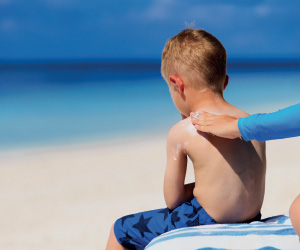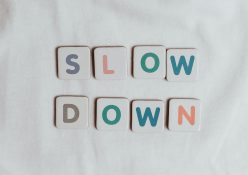Love lazing in the sun? You may want to think twice. Nwabisa Ngumbela finds out about the dangers of skin cancer and how to avoid it
 Did you know that your skin is your largest organ? It covers and protects everything inside your body. Without it, you couldn’t exist. ‘This is why it’s so important to take good care of it,’ says Cape Town dermatologist Dr Matete Mathobela. By doing this, you reduce your chances of developing skin cancer – an uncontrolled growth of abnormal skin cells. It’s usually caused by excessive exposure to ultraviolet (UV) radiation, most commonly from sunshine or tanning beds.
Did you know that your skin is your largest organ? It covers and protects everything inside your body. Without it, you couldn’t exist. ‘This is why it’s so important to take good care of it,’ says Cape Town dermatologist Dr Matete Mathobela. By doing this, you reduce your chances of developing skin cancer – an uncontrolled growth of abnormal skin cells. It’s usually caused by excessive exposure to ultraviolet (UV) radiation, most commonly from sunshine or tanning beds.
SPOT THE DIFFERENCE
One of the first signs of skin cancer is a change in appearance of a mole or freckle on your body.
Moles
Moles and skin tags are growths that are black or brown in colour and are likely to appear alone or in groups. They may appear in early childhood and during the first 30 years of your life. The majority of these growths are normal.
Moles that could possibly be cancerous are the ones that look different from the existing ones or those that develop after your thirties.
When to worry If you notice changes in a mole’s shape, colour or size, you should have a dermatologist examine it. Growths that have a tendency to bleed, itch, ooze or become painful should also be attended to.
Freckles
These are small patches that are light brown in colour. They are often made more visible by being exposed to the sun. They’re usually the size of a pencil dot. They develop on sun-exposed skin and are common in people with a fair complexion. They can be found on the cheeks, nose, arms and shoulders and are likely to appear in the toddler stage. Even though freckles are typically the same colour, you can also get red and yellow ones.
When to worry When these spots suddenly grow to be larger than six millimetres, it may be the first sign of melanoma. The second sign could be a change of colour.
A RISKY MATTER
There are a number of factors that increase your chances of developing cancer, including having fair skin, being severely sunburnt as a child, a family history of melanoma and having had it before. ‘But remember,’ Dr Mathobela says, ‘just like any other cancer, if found early enough, it can be successfully treated, and if not detected on time, it can be fatal.’
THE KIDS ARE ALRIGHT
‘Sunburn in children increases the risk of them getting skin cancer when they’re older,’ explains Dr Mathobela. ‘Suffering just one bad sunburn during childhood or adolescence doubles a person’s risk of developing melanoma.’ So children under six months should be kept completely out of the sun, or if this cannot be avoided, ensure that they wear protective clothing such as long-sleeved cotton T-shirts and broad-brimmed hats.
Older kids must always wear sunscreen when they are outside, and reapply every two hours and after swimming or sweating. ‘Remind them to SSSW – slip on a shirt, slop on some sunscreen, slap on a hat and wrap on sunglasses. This is a mnemonic to help them remember the important steps to avoid developing skin cancer.’
BE SAFE IN THE SUN
• Limit your exposure to UV light by avoiding being in direct sunlight for too long.
• Covering up doesn’t mean UV rays are blocked out. If you can see light through fabric, the UV rays are also getting through.
• Sunscreen! Be generous with how much you apply. If you wear make-up, your first base should be sunscreen.
• Apply the above steps more stringently where children are concerned, because they’re outside more often and are not always fully aware of the dangers of the sun.







